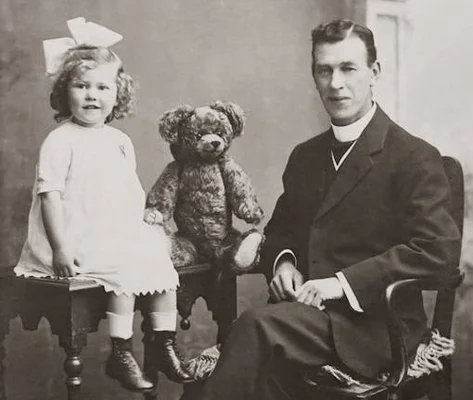The 1960s was a unique decade that straddled the traditional values of post-war America and the dawning of a more progressive era. Family life during this time operated under a set of expectations and rules that would raise eyebrows in today’s households. While some families were beginning to embrace the cultural shifts happening around them, many American homes still adhered to child-rearing and family management principles that now seem outdated or even shocking by contemporary standards.
1. Children Were Expected to Play Unsupervised Until Dinner Time

In the 1960s, a common rule in most households was simple: “Go outside and play, come back when the streetlights come on.” Parents routinely sent children as young as five or six out to play in the neighborhood with minimal supervision, expecting them to entertain themselves for hours. Children roamed freely on bicycles, exploring woods, vacant lots, and neighborhoods far from home, with parents having no way to contact them throughout the day. School for Amazing Kids gives a rundown of all the benefits to playing outside, offering points of consideration as long as it’s safe.
The concept of “free-range parenting” wasn’t a trendy choice but the default mode of child supervision, with kids expected to solve their own disputes and navigate their own troubles. Parents genuinely believed this independence built character and resourcefulness, while today such practices might trigger calls to child protective services. The dinner bell or a parent’s distinctive whistle was often the only communication system between parent and child during these long stretches of autonomous play.
2. Fathers Had Limited Involvement in Child-Rearing

Many households operated under the unspoken rule that fathers were primarily breadwinners whose involvement in daily child-rearing was peripheral at best. Fathers rarely changed diapers, prepared meals, helped with homework, or handled school communications, as these tasks were firmly in the “mother’s domain.” Men who took too active a role in domestic responsibilities might face social ridicule or be seen as undermining their wives’ territory. Shreveport Times reports that dads these days are actually more involved than ever in raising their kids.
Many children knew their fathers primarily as disciplinarians and occasional weekend playmates rather than intimately involved parents. The expectation that fathers would attend parent-teacher conferences, children’s medical appointments, or even know the names of their children’s friends was significantly lower than today. Modern expectations of fathers as equal parenting partners would seem bizarrely unbalanced to many families of the 1960s.
3. Physical Punishment Was Not Just Accepted, But Expected

“Wait until your father gets home” was a threat that carried genuine weight in 1960s households, where spanking and other forms of corporal punishment were not only common but often considered essential to proper child-rearing. Many schools still practiced paddling, and parents routinely used belts, wooden spoons, or bare hands to discipline children for infractions ranging from talking back to poor academic performance. The idea that physical punishment built character and taught respect was widely embraced across social classes and regions. According to AACAP, though, there are several states where corporal punishment is legal in schools.
Parents openly discussed discipline techniques with other parents and often informed teachers they had permission to physically discipline their children if necessary. Far from being secretive about these practices, many parents proudly advocated for strict physical discipline, believing it was necessary for raising respectful, well-behaved children. Today’s emphasis on positive reinforcement and non-physical consequences would seem bizarrely lenient to many 1960s parents who genuinely believed “spare the rod, spoil the child.”
4. Dinner Was Served at the Same Time Every Night – And You’d Better Be There

Most 1960s households operated on rigid mealtime schedules, with dinner typically served between 5:30 and 6:30 pm, and attendance was mandatory unless you had a truly exceptional excuse. The entire family was expected to sit down together, with the father at the head of the table, and remain seated until everyone had finished eating and been excused. Missing dinner for a social engagement or sports practice was often simply not an option, as mothers planned and timed meals with military precision.
Children were expected to eat whatever was served without complaint, as special meals for picky eaters were virtually unheard of in most households. The notion of “clean your plate because children are starving in Africa” was not just a saying but a genuine expectation, with many parents prohibiting children from leaving the table until every morsel was consumed. The modern concept of family members eating different meals at different times based on individual schedules would have been considered chaotic and unacceptable in the typical 1960s household.
5. Children Had Virtually No Privacy Rights

In the 1960s, the idea that children deserved or needed privacy was largely nonexistent, with parents routinely reading diaries, searching rooms, and opening mail without a second thought. Doors to bedrooms were often required to remain open at all times, with some homes not even having locks on bathroom doors. Parents justified these practices not as invasions of privacy but as responsible oversight necessary for proper child-rearing.
Phone calls – conducted on shared family phones in central locations – were frequently monitored or limited to specific durations, especially for teenagers. The concept of a “right to privacy” for anyone under 18 simply didn’t exist in most households; children’s possessions, correspondence, and personal thoughts were considered fair game for parental inspection at any time. Modern teenagers’ expectations of digital privacy and private communication would seem not just inappropriate but potentially dangerous to parents from this era.
6. Children Were Seen, Not Heard When Adults Were Speaking

“Don’t speak unless spoken to” wasn’t just a suggestion but a rigid rule in many 1960s households, especially when adult visitors were present. Children were expected to be silent, well-behaved observers during adult conversations, answering politely when addressed but never initiating conversation or interrupting adults under any circumstances. Many children sat quietly through entire dinner parties or family gatherings without uttering a word unless directly questioned by an adult.
This rule extended to telephone calls, which were treated with enormous importance since long-distance calls were expensive and phones were tethered to walls in central locations. Children were taught that interrupting a parent on the telephone was a serious infraction, sometimes punishable by disciplinary measures. Today’s family dynamic that includes children freely participating in adult conversations and constantly interrupting parents’ activities would be considered shockingly permissive by 1960s standards.
7. Children’s Activities and Interests Were Strictly Gender-Segregated

Parents in the 1960s typically enforced rigid gender boundaries around toys, activities, clothing, and future aspirations with a strictness that would be considered extreme today. Boys who showed interest in cooking, dolls, or artistic pursuits might be actively discouraged or even punished, while girls were often limited to “feminine” activities regardless of their natural inclinations. Parents would frequently redirect children toward gender-appropriate toys and hobbies, worrying that cross-gender interests might indicate something wrong with their development.
This segregation extended to career aspirations, with many parents openly discouraging girls from considering traditionally male professions like medicine, law, or business. Boys interested in nursing, teaching young children, or other “feminine” careers would often be actively redirected toward more “appropriate” aspirations. The idea of gender-neutral parenting or allowing children to follow their individual interests regardless of traditional gender associations would have seemed not just progressive but potentially harmful to many 1960s parents.
8. Mental Health Issues Were to Be Handled Privately and Quietly

Family rules around emotional and psychological struggles were often summed up in phrases like “we don’t air our dirty laundry” or “keep family business in the family.” Children experiencing depression, anxiety, or other mental health challenges were frequently told to “snap out of it” or “look on the bright side” rather than receiving professional support. Mental health concerns were often seen as character weaknesses or moral failings rather than legitimate medical conditions.
Parents rarely discussed their children’s emotional struggles with others, fearing judgment or social stigma, and children learned quickly to mask their feelings outside the home. The idea of openly discussing a child’s therapy appointments or medication for conditions like ADHD would have been unthinkably inappropriate to many 1960s families. Today’s approach of seeking professional help and openly supporting children through mental health challenges represents a dramatic departure from the silence and stoicism expected in previous generations.
9. Children Had Little Say in Family Decisions

The notion that children should have input into family decisions – from where to go on vacation to what car to buy – would have seemed absurd to most 1960s parents. Major family decisions were made by adults, typically by the father as head of household, with children simply informed of the outcomes when necessary. Even decisions directly affecting children, such as which activities they would participate in or which courses they would take in school, were often made with minimal input from the children themselves.
Family meetings to discuss decisions democratically were rare, and the concept of a child having veto power over any family choice would have been unthinkable. Children who expressed too many opinions about family matters were often considered disrespectful or “too big for their britches.” Today’s practice of carefully considering children’s preferences and involving them in significant family decisions would appear to many 1960s parents as a fundamental abdication of parental authority.
10. Children Were Expected to Contribute Significant Labor to Household Maintenance

In many 1960s households, children as young as six or seven were assigned substantial chores that contributed meaningfully to the functioning of the household, not just token responsibilities. Children routinely prepared parts of meals, did laundry, cared for younger siblings for extended periods, mowed lawns, and handled household repairs, with these contributions considered obligations rather than activities deserving special recognition or payment.
The concept of paying children for basic household chores would have seemed bizarre to many parents, who viewed these contributions as a natural part of family membership. Allowances, when they existed, were often not tied to chores but were modest amounts provided for learning money management, with the expectation that significant household work would be done regardless. Today’s more limited expectations of children’s contributions to household labor and the practice of incentivizing basic responsibilities with payment would seem indulgent to many parents from this era.
11. Table Manners Were Non-Negotiable and Rigorously Enforced

Proper behavior at the dinner table was governed by strict rules that were taught and enforced with a seriousness that might seem excessive by today’s standards. Children were expected to place napkins in laps, keep elbows off tables, ask permission to be excused, and use the proper utensils for each course, with violations often resulting in being sent from the table or other consequences. Many families prohibited any discussion of unpleasant topics at mealtime, with conversation standards as carefully regulated as the physical aspects of dining etiquette.
The dinner table was often viewed as a training ground for proper social behavior, with parents believing that laxity in table manners would reflect poorly on the family’s standing. Children learned elaborate rules about passing dishes, waiting for everyone to be served before eating, and proper placement of utensils when finished, regardless of their age. The casual, on-the-go eating habits of many modern families and the relaxed approach to children’s mealtime behavior would have been viewed as a serious parenting failure by 1960s standards.
12. Dating Was Heavily Supervised With Strict Curfews and Rules

Teenage dating in the 1960s operated under a complex system of rules that gave parents significant control over when, where, and whom their children could date. Many parents enforced actual age requirements before dating was permitted at all, with some families prohibiting solo dates until age 16 or later. Meeting a date’s parents before going out was often mandatory, and fathers commonly interviewed potential suitors in intimidating “what are your intentions” conversations that had real consequences.
Curfews were early and rigid – often 10:00 PM on weekends – and violations could result in being “grounded” for weeks or losing dating privileges entirely. Physical displays of affection were heavily restricted, with many parents forbidding teenagers from being alone in rooms together or explicit rules like “both feet on the floor at all times” when couples were in a family living room. The largely unsupervised dating lives of modern teenagers, facilitated by private communication channels and greater autonomy, would appear shockingly permissive and potentially dangerous to typical parents of the 1960s era.
Looking back at these rules reveals not just how parenting standards have evolved but how dramatically our understanding of child development, family dynamics, and personal autonomy has shifted in just a few generations. While some may feel nostalgic for the structure and clarity these rigid expectations provided, most contemporary parents recognize that family relationships have largely benefited from more collaborative approaches to raising children. Today’s parents may set boundaries differently, but they’re still guided by the same fundamental desire that motivated the strict rule-makers of the 1960s: raising healthy, successful, and well-adjusted children in a complex world.


